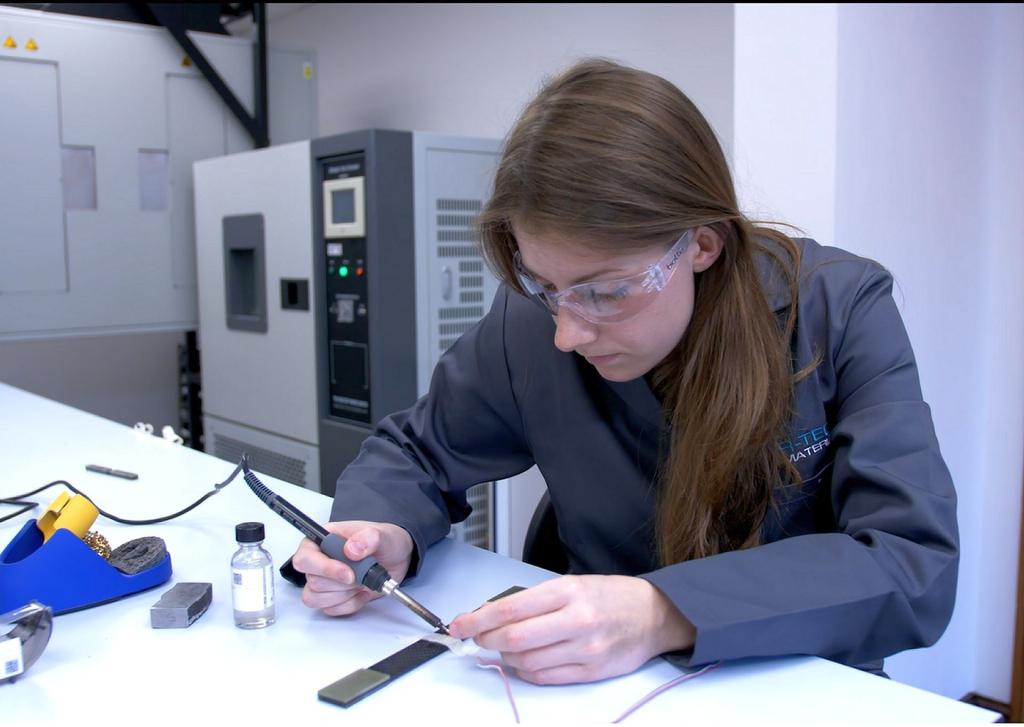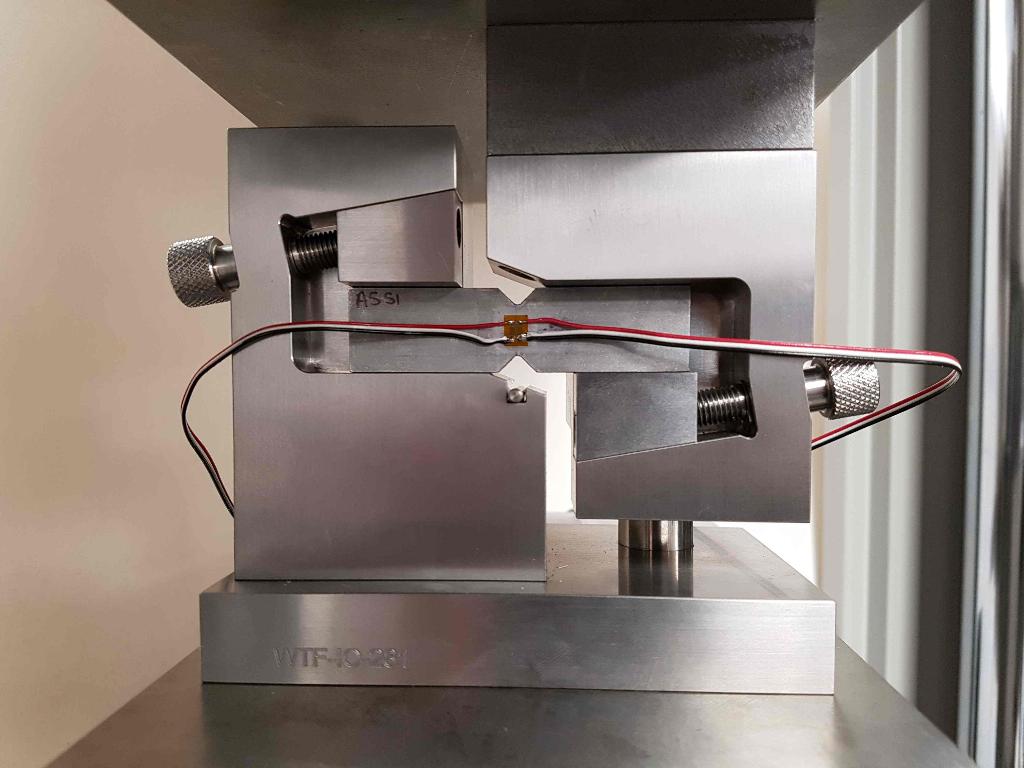Standing the test of time

In a Q&A session with R-TECH Materials’ composites manager, Dr Geraint Havard Composites in Manufacturing hears about the kinds of trends and demands associated with both static and dynamic testing of composite materials.
Each year sees more demands for quicker testing turnarounds and the increasing accuracy requirements of test standards. Fortunately, R-TECH Materials’ has always had a culture of continuous improvement in its laboratory, enabling the company to keep ahead of these increasingly stringent requirements.
Q) Are structural thicknesses increasing, along with the increase in the strength of the composite materials, leading to larger test forces requiring higher capacity machines and fixtures?
Generally, test coupons are the same size, and the data gathered from their performance is put into stress analysis software in order to predict component behaviour. This allows most companies to avoid having to undertake costly mechanical testing of components. However, from time to time we have to test components for customers. We have a rebar testing lab with machine capacity up to 1,500kN that allows us to accommodate higher breaking load components when required.
In the last few years we’ve seen the introduction of new technologies into composites, which really challenge the test standards in their current guises, particularly when it comes to delamination behaviour in tests like interlaminar shear and fracture toughness testing. From 3D weaving, to Z-pinning, graphene-infused resins to some thermoplastic matrices, we’re seeing tougher composites being developed. This is great news for the industry, however from the perspective of a test lab, it means we have to find new solutions to deliver the traditionally required test results, as the traditional methods simply don't work with these new technologies. Fortunately, through my position as the Composites UK representative on the BSI and ASTM standards committees, I’m in a position to have conversations with the best minds in composites testing worldwide, in order to deliver solutions to these challenges.
Furthermore, we’ve started to see the introduction of metal matrix composites into our test laboratory. Metal matrix has a far higher shear strength than plastic matrices which has led to a number of assumptions on how to test composite materials being thrown out the window. There is currently a serious lack of test standards for metal matrix composites and each lab is having to adapt existing metals and composite test standards to get reliable results. As a result, for the past year I’ve been calling for the set-up for a standards committee to specifically look at the issue of metal matrix composite testing, so that we can find a solution the whole industry can use.
Q) Are you being forced to look at different types of gripper/end effector/alignment methods as the shapes/sizes of composite test pieces become increasingly more varied?

For some time, the industry consensus on testing of composite materials is that the traditional dog bone-shaped specimens used in other industries are simply not suitable for composites testing. This is due to the shear forces being imparted on the dog ears of the specimen are greater than the shear strength of the matrix – a particular issue when testing unidirectional composites. Therefore, the dog ears tear off, leaving an essentially straight sided specimen. This has led to specimens being straight-sided across the board. To overcome the stress concentrations at the grips, we’ve turned to end tabbing, where we increase the thickness of the sample outside the gauge area of the sample by bonding fibreglass tabs.
With compression testing, the issue isn’t so much to do with the stress concentrations imparted by the grips - and more to do with the desire to prevent Euler column buckling of the sample to give us a valid failure mechanism. This has led to a requirement for a slightly different tabbing solution and also specialist test fixtures in order to prevent these buckling issues.
Q) Is there still a lack of empiric data for T&M companies to dip into, in the same way that traditional metallics testing companies can quickly access data?
This is 100% the case. A lecturer from Edinburgh University once told me that the lack of standardised material types like those found in the metals industry is holding composite materials back. This is because designers who have very little experience of working with composite materials don’t have 'off the shelf' materials to base their designs on. Each resin and fibre combination has its own unique properties.
From a test lab point of view what this means is, unlike our colleagues who test rebar, we cannot accurately predict the properties of the materials we are testing, as we are largely unaware of the materials that go into the black bits of plastic sent to us for testing. That means we cannot sanity check our results as they come through to the same degree and therefore, we must be increasingly confident in our test methods and the knowledge and skill of our technicians to deliver accurate results. That said, regular proficiency and ‘round robin’ test programmes do act as our sanity check, to make sure that our methods are correct.
Q) Is the composites community looking for design parity with metals which will mean development and acceptance of equivalent tests, both physically and in underpinning theory?

As previously mentioned, we’re a little way off from design parity with metals due to the lack of off-the-shelf composite materials. The industry is spending a lot of resource trying to educate the so called 'composite illiterate' designers on our way of doing things. However, without standard materials, designers with no experience with working with composites will have little confidence in what they are doing, and as such will stick to the tried and tested materials they have always worked with.
The beauty of composites is that we can easily achieve structural shapes that previously were unthinkable or very difficult to achieve. This gives designers far more flexibility in what they can do, in addition to other well-known benefits of lightweighting and increased corrosion resistance. As an industry, we must make the designers’ lives easier to make the jump over to composite materials.
Q) How much of a role can simulation and visualisation software play in the composites testing arena?
I once heard a major aerospace OEM spokesperson say at a tradeshow that one day, computer modelling will completely replace mechanical testing due to how accurate the simulations are becoming. I'm unconvinced, as there will always be a need for sanity checking the results. A simple mistake in a programme could lead to a catastrophic accident without the sanity checking that mechanical testing would introduce. In that sense, as a lab, we exist to prevent human error delivering poor simulation results. To quote the motto above the Kirkaldy test museum: as a lab, our job is to deliver facts, not opinions.
No doubt some people will always see testing as a necessary evil and will look to reduce their testing costs through simulation as much as possible. I also acknowledge that due to the orthotropic nature of composite materials, test programmes can quickly become very costly in comparison with other materials. Therefore, in order to make composites competitive with other materials, computer simulation is definitely necessary to reduce the overall requirement for testing.
Q) How do you find the industry in terms of doing business and keeping pace with stringent specifications and qualifications?
The industry is certainly very dynamic when it comes to keeping pace with the stringent requirements of external bodies. The composites industry as a whole is constantly trying to drive up standards and stay ahead of the game as far as these requirements are concerned.
The composites testing industry on the other hand has fallen behind the trend here. While there are a number of laboratories in the UK who test composites, only two independent laboratories hold Nadcap accreditation - one of which is R-TECH. While most laboratories do hold UKAS accreditation, most do so with significantly reduced scopes and have caveats to their accreditations. Given that the industry as a whole must meet these requirements, it’s only fair they should expect the same level of accreditations from their testing partners.
Q) Do you find the UK composites industry quite dynamic and quick to adopt new technologies as key to gaining a competitive edge?

Yes and no. The industry is very innovative and is always providing interesting new technologies they are trying to exploit, but often these end up in non safety-critical applications - first as a proof of concept, such as sporting goods, where safety is less of an issue and performance is everything. The same goes for new companies entering the market. The composites market is rather risk-averse when it comes to accepting new companies into the market and as such, you need to bide your time as you build your reputation.
Q) Are certain metals applications in a stage of much slower evolution and growth, where heavy reliance on legacy data can cause considerable inertia in adopting new methods as users need to prove results can be compared with decades’ worth of production and design data?
Again, this is a yes and no question. For your off-the-shelf grades of metal, this is definitely the case – however, the big steel companies are constantly researching to find the best quality steel alloys for automotive and electrical steel applications. The real difference is the number of players in the composites industry who are researching and pushing growth and therefore delivering growth. In the metals industry, it seems like only the big players are looking at R&D, whereas in composites it is everyone.
Q) Finally, where do you see the biggest business challenge coming from this year?
While the majority of our business remains in the UK, it’s hard to predict how Brexit will affect many of our customers. Some of them are foreign-owned and have already seen investment being put on hold until they know what Brexit means. For sure, this isn't the kind of economic climate that suits the manufacturing industry. However, this year has seen significant growth for us as a business as we cement our reputation in the industry and hopefully, in spite of Brexit, continue that upwards trend.









